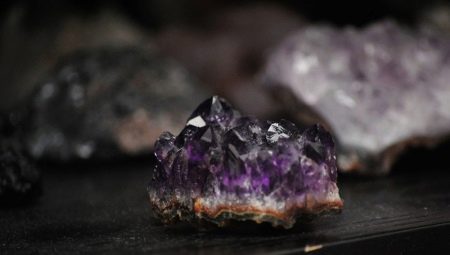Amethyst is a type of natural quartz. It refers to precious or semiprecious stones and has been known since ancient times. Transparent specimens are classified as precious, and opaque - as ornamental. Amethyst is even mentioned in biblical texts. Copies of this mineral adorn the crowns of both the British Empire and Russian tsars. The popularity of this mineral has not died out in our time.
Modern jewelers use it in the manufacture of various jewelry: pendants, pendants, rings, bracelets, hairpins, etc. Despite the fact that amethyst is not at all a rare or particularly expensive stone, they began to actively fake it.
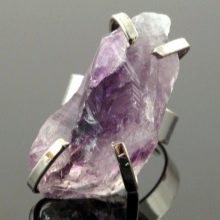
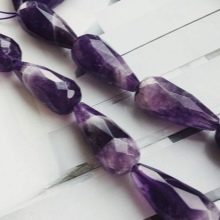
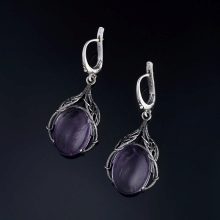
Features of Natural Amethyst
In order to be able to determine the authenticity of the stone and distinguish a natural crystal from a fake even at home, we will consider several features inherent in a real amethyst. The most important characteristic is color. The color scheme is mainly in violet tones - from pale lilac to dark lilac, almost black. Due to this color, the gem is often called stone violet. The stone, as a rule, is translucent, uneven, dim color.
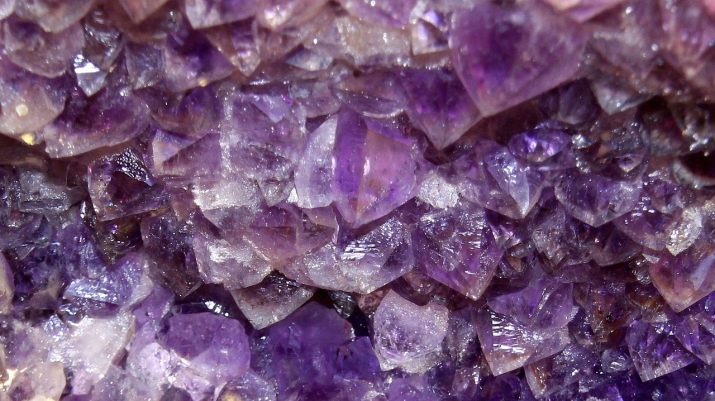
There are green amethysts - praziolites. They are very rare, the price for them is high, you will not find such in an ordinary store.
The crystal has a sufficient degree of hardness - 7 on the Mohs scale, that is, it is problematic to scratch it, however, it can easily damage, for example, glass. Amethyst is characteristic glass, pearlescent, transparency, fragility, lack of cleavage.

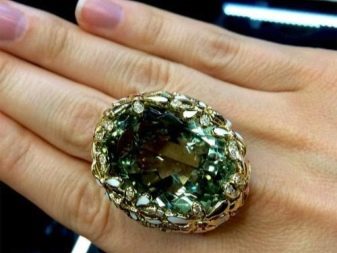
Imitation Artificial Stone
Under the guise of a real gem, unscrupulous sellers can offer imitations of glass, plastic, other natural, but cheaper minerals. In addition, artificially grown crystals, including amethysts, are now appearing. Quartz-based specimens are grown. That is, natural material is used. The rate of crystal creation in the laboratory is about 0.5 mm per day, i.e. a small crystal can be obtained in a month.
Whereas in vivo it will form over a million years.
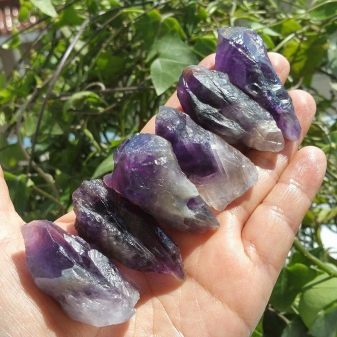
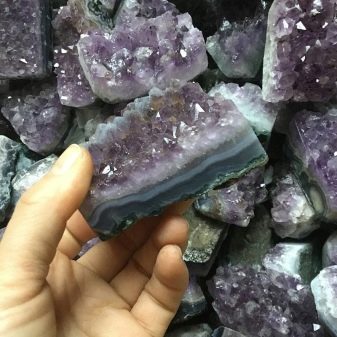
In most respects, hydrothermal specimens are in no way inferior to natural ones, in some respects even superior. Because artificial stones are perfect. Such in nature do not occur. One of the ways to create artificial minerals is hydrothermal. Its essence lies in the crystallization of a substance from a hot solution of water under high pressure.

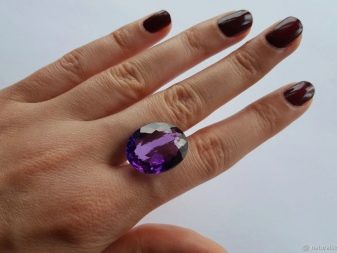
Synthetic and hydrothermal crystals are not in the full sense a fake of natural stones. Rather, they relate to artificial analogues, this is a kind of alternative to natural materials. So, the main difference between synthetic crystals and hydrothermal ones is the basis. For hydrothermal, natural raw materials are ground into small pieces. And for synthetic, not a crumb, a solution.
Since the basic physical characteristics and properties of the gem are preserved, synthetic and hydrothermal stones are widely used in jewelry. It is not so important for the masters in what conditions the crystal was formed - in nature or in the laboratory, color, density, structure are much more important.
In addition, hydrothermal treatment can improve the quality of the stone.

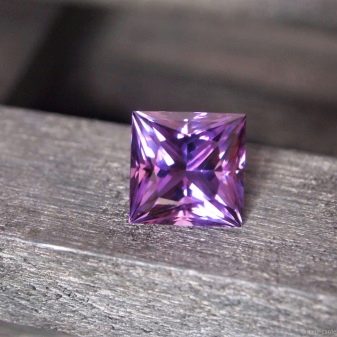
Hydrothermal and synthetic stones are used not only for the manufacture of jewelry, but also in the military and space industries, even in medical devices. The seller is obliged to tell the buyer that the stone was hydrothermally processed. If a product with a hydrothermal stone is sold, then in the description of the insert there will be a marking “GT”, which informs that the gem is artificial.
Often amethyst is given a cheaper mineral - fluorite. It is softer than amethyst and can be scratched with a knife.
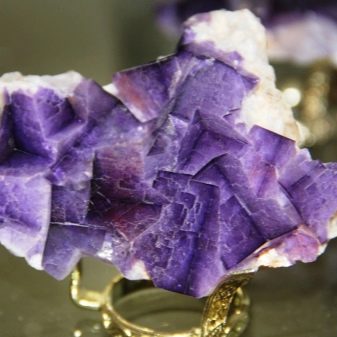
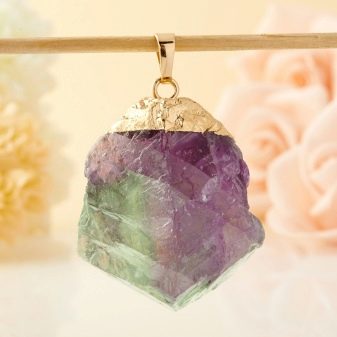
An imitation of a gem can also be obtained by irradiating colorless quartz with cobalt, after which the crystal will change its color to violet. The problem is that it will quickly disappear when heated or exposed to sunlight.
How to identify a fake?
The imitation of plastic is the easiest to identify. It is light in comparison with a stone, warm, easily damaged. Even an unprepared person will cope with this.

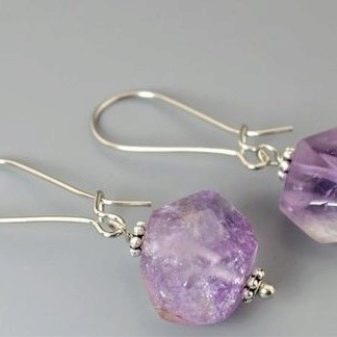
Several methods are known in order to distinguish a real mineral from a synthetic or glass analog.
- Color. The first step in the visual assessment of the stone is to pay attention to purity and color. The color of a natural gem is not absolutely even and equally saturated over the entire surface. Also, there is no perfect transparency. Of course, such a pattern would look most advantageous in any decoration. But the fact is that in nature these are extremely rare. So, before us is an artificially grown crystal.
- The next item is a hardness test. For this test, you need a knife or blade that you can try to scratch the stone. As mentioned earlier, amethyst is quite hard, so it's difficult to leave a scratch on it. If this succeeds, then this is a fake. Similarly, a natural mineral can be distinguished from glass and plastic. If the crystal is artificially grown, then it has the same hardness as the real one. Therefore, scratches on it will not appear.
- Thermal conductivity. One of the easiest methods. Most natural gems (amethyst is no exception) are characterized by poor thermal conductivity.If you hold it in your hand, then a real amethyst will be difficult to heat up. Fake is much faster. This experience works best when comparing two samples. If you know the origin of one of them, then imitation can be determined by the difference in heating time.
- Water. In this experiment, when checking for authenticity, the sample is lowered into the water for a minute and looked at its edges. In real stone, the edges will look paler. This method is suitable for all types of imitations, including artificially grown minerals - they maintain a uniform color.
- Ultraviolet. When irradiated with ultraviolet light, an amethyst of natural origin will discolor evenly, unlike synthetic ones. The latter are discolored by spots. Even if we compare the color of the crystal in bright sunlight and room lighting, the difference will be noticeable in natural stone.
- Magnifier. Microscopes or the inclusion of gas bubbles can be detected with a microscope or a magnifying glass. Artificially grown samples cannot have them. There are also uneven lines on the surface of artificial minerals - they arise when grown in laboratory conditions.
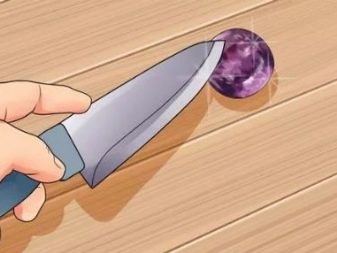
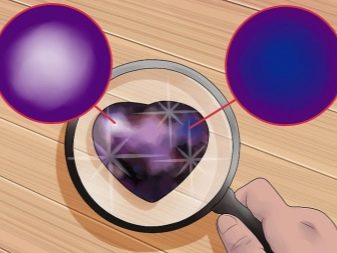
All of the verification methods listed above are suitable for home use. There are laboratory methods - X-ray or spectral analysis. They have a high cost, but guarantee the determination of the authenticity of the mineral with high accuracy.
For how to identify natural stone, see the next video.
